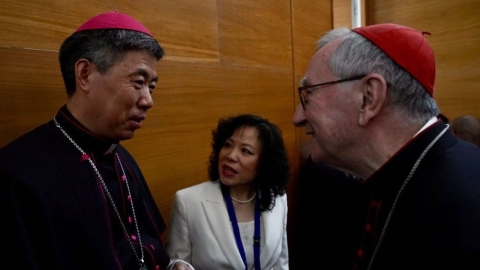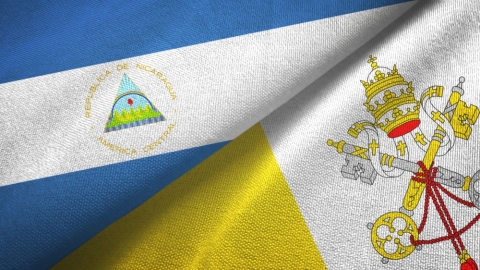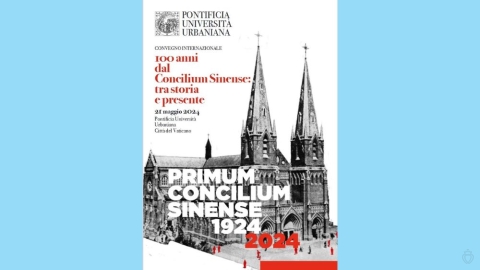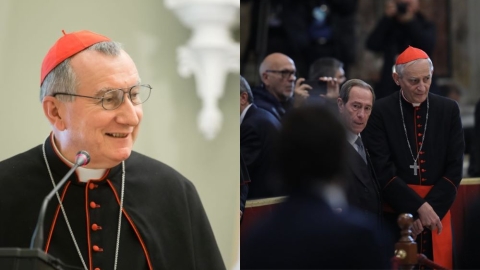The Catholic Church in South Korea

Jeondong Cathedral in the city of Jeonju, in western South Korea.
Statistics concerning the Korean Church revealed on December 31, 2013, that Korea has 5.4 million Catholics, which represents 10.7% of the population (total population: 50.2 million). The Church has 16 ecclesiastical districts; 1,673 parishes and 843 pastoral centers, with 35 bishops; 4,261 priests; 1,884 seminarians; 10 deacons; 9,532 religious; 56 consecrated souls; 123 lay missionaries and 14, 195 catechists. The Church runs 328 educational centers of all levels for 221,020 students, plus 49 specialized centers and 200 others, 40 hospitals and 4 clinics, 9 leprosarii, 513 retirement homes, 277 orphanages and daycares, and 83 family counseling and life protection offices.
The Conference of Catholic Bishops of Korea (CCBK) declared in an annual report published in May 2013 that for the last ten years, the number of South-Korean Catholics has been steadily increasing, with a growth rate as high as 1.5 to 2.7 per year, while the population’s growth has not exceeded 0.8% per year. The archdiocese of Seoul has an important growth rate, and covers 27.1% of the country’s Catholics (14% of the total population of the region). Between 1960 and 2011, the population went from 20 million to 50 million, the Protestants went from 2% to 17% of the population, and Catholics from 0.5% to 10.3%.
The average income went from $1,300 to $23,500. Thanks to American help, South Korea enjoyed an important economic, social and civil development after the Korean war (between the North and the South, 1950-1953); education became obligatory and open to all, Catholics and Protestants built many educational establishments of all levels, including universities.
Fr. Giovanni Trisolini, one of the first Salesian Fathers to enter Korea in 1959, explained in 1986: “When I arrived in Korea, the misery was frightening. The country was still suffering from the destruction provoked by the war; armies had come and gone over every inch of the territory. Our first job as missionaries was to feed the people, who were literally starving to death. There were few roads and railways, and hardly any of the public services were functional. In these circumstances, the governments of South Korea, while the country was occupied by the Americans, made the instruction of the people a priority and founded schools everywhere, with a modern education system. The goal was to form the new generations without having recourse to the traditional teaching that transmitted a Confucian vision of man, that was inherited from China and made it impossible to form the youth in a modern country.”
According to Fr. Vincent Ri, prefect of studies of the faculty of theology of the great seminary of Kwangju: “The Koreans are proud to be defined as religious: even among the students, the intellectuals, the most cultivated, the anti-religious or atheistic mindset that we find everywhere in Europe is nonexistent. The religious fact is at the center of our people’s life and this is an ancient tradition that has not been abolished by the economic and technical development: it has on the contrary been strengthened by it.”
However, the preparation of Catholic catechumens, which is especially short and sometimes reduced to six months, explains the fact that many new converts do not persevere after their baptism: “A preparation that lasts only 6 months is totally insufficient to live the discovery of the faith interiorly and for a true deep conversion,” laments Fr. Michel Roncin, priest of the Society of Foreign Missions of Paris (MEP), who has been in Korea for over 30 years.
South Korea has been touched by the plague of abortion, estimated at 1.5 million per year, states Eglises d’Asie (EDA, the Foreign Missions of Paris’ information agency). The statistics of the Ministry of Public Health reveal 350,000 abortions medically recorded per year (about 44% of pregnancies): this includes only the abortions that are declared and allowed by the 1973 law authorizing abortion under certain conditions (serious deformation of the fetus, congenital sickness of one or both parents, pregnancy resulting from rape or incest or endangering the mother’s life). The Catholic bishops of Korea have never ceased their opposition to abortion, as to contraceptive measures, expressing their deep concern in the face of this “installation of a death-bearing culture.”
De. Shim Sang-duk, a gynecologist and obstetrician in Seoul with no particular religious conviction, has also risen up against this culture of death, founding a pro-life movement in order to “reduce the number of abortions by one third over the next ten years.”
The Catholic Church offers to welcome single mothers who wish to keep their children in her hospitals and to support them financially, materially and morally. This initiative, baptized Project for a New Life, was officially launched in February 2011 by Bishop Gabriel Chang Bong-hun, bishop of Cheongju and president of the Committee of Bioethics for the CCBK, who declared: “What concerns me is that people have become completely insensitive to the idea of a moral judgment. It doesn’t matter any more, and so they are preparing the grounds for other crimes. A culture of rampant death is gaining on the whole world, but especially in Korea, and it must be stopped.”
(sources: VIS/eda/chiesa – DICI no.299 dated August 1, 2014)
You can also read :
Itinerary for the Pope’s journey to South Korea





